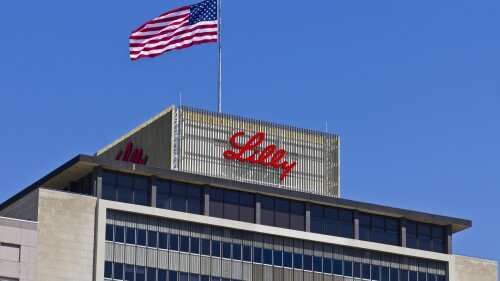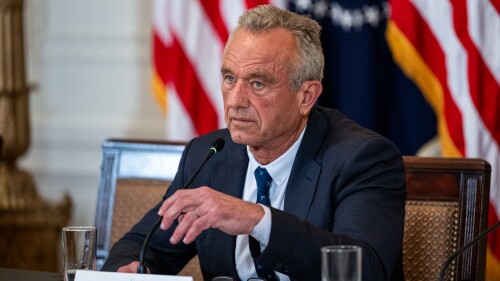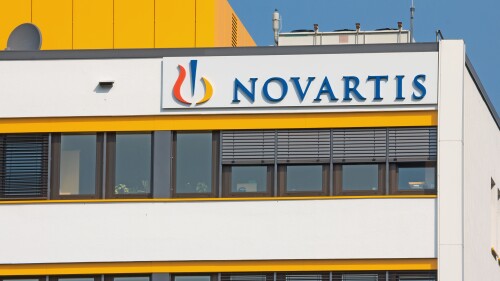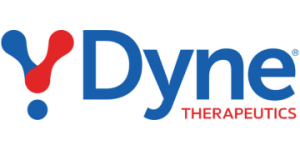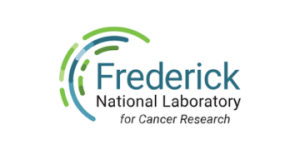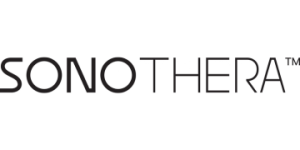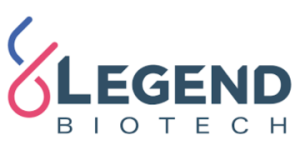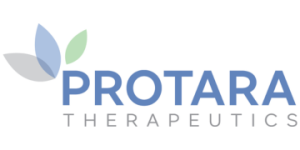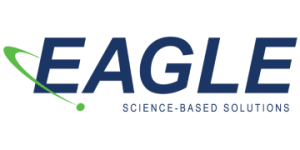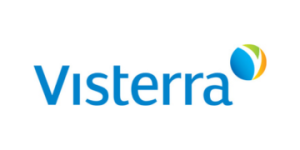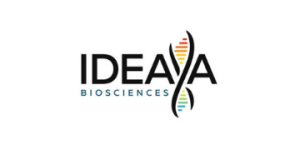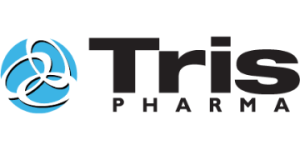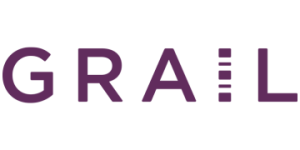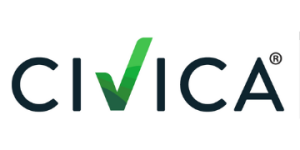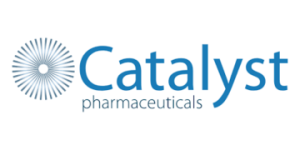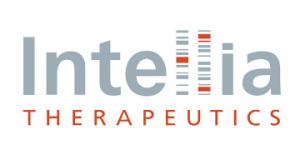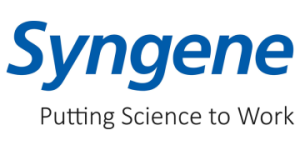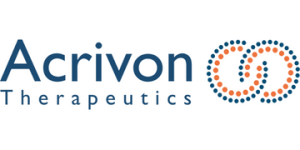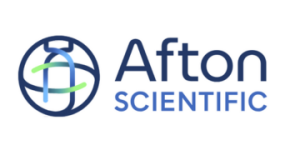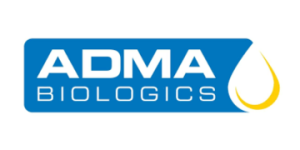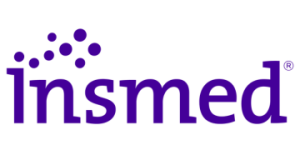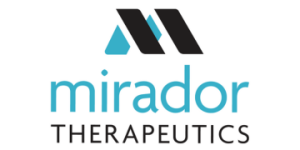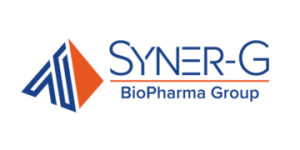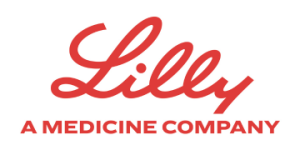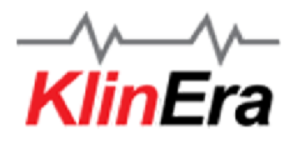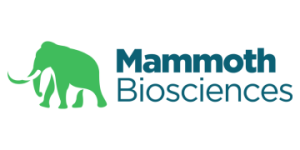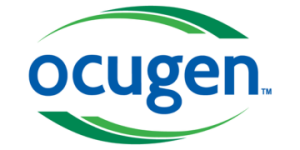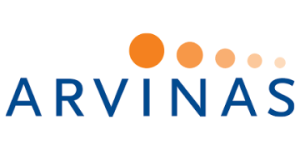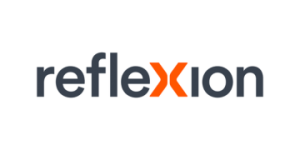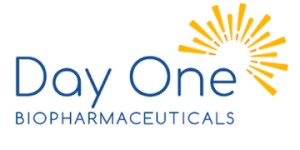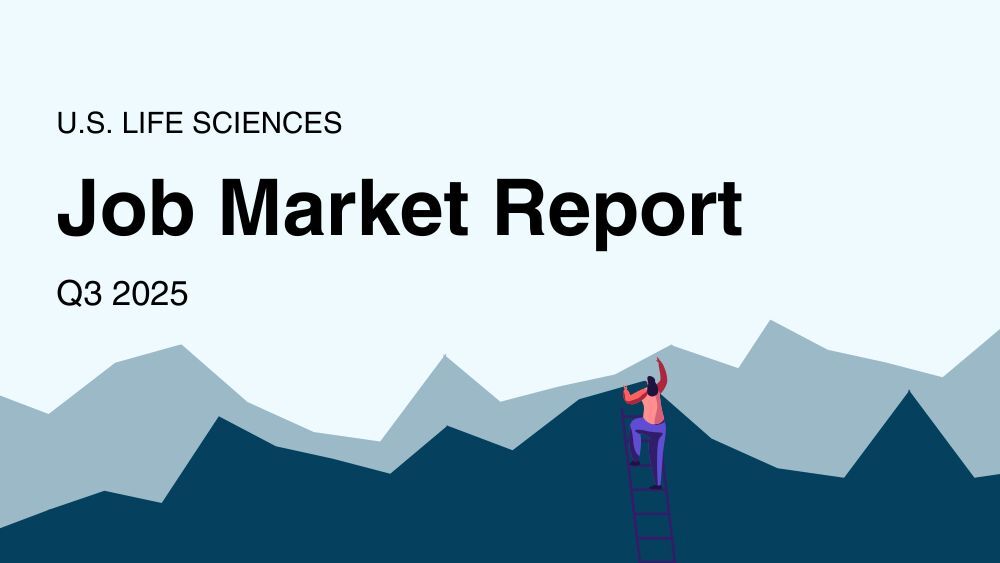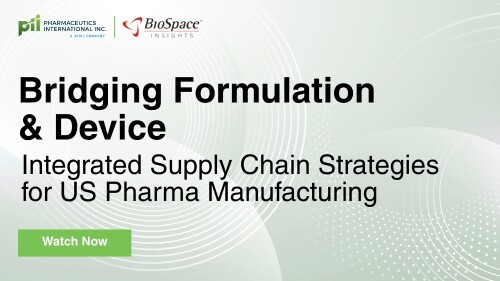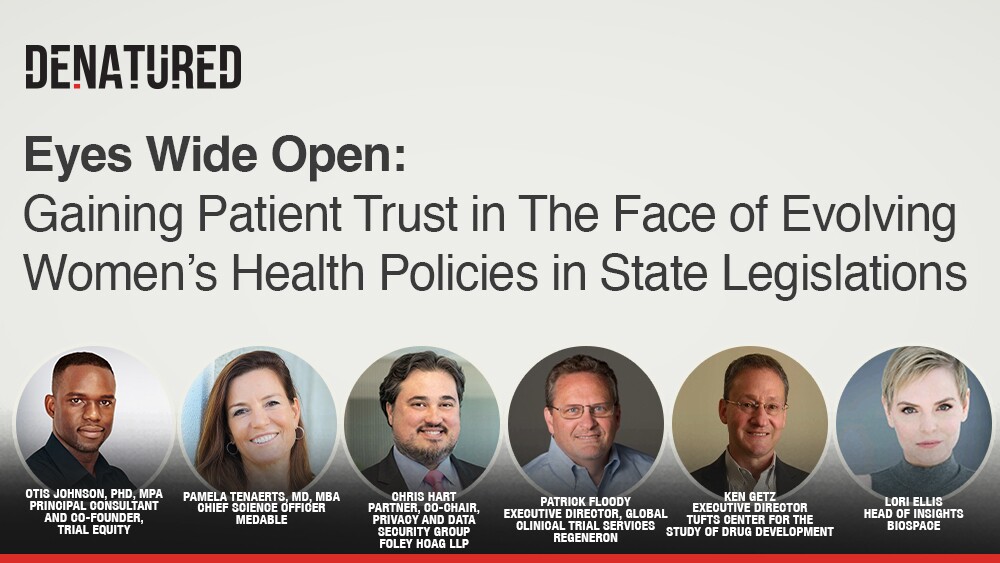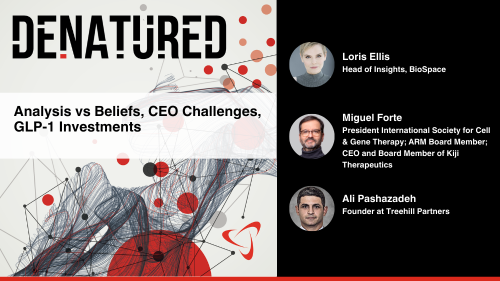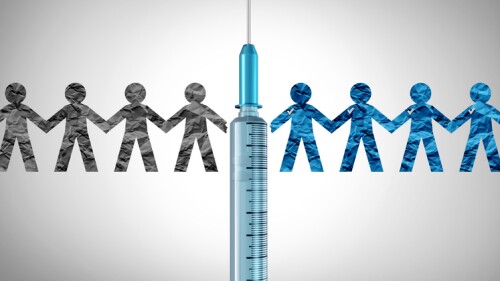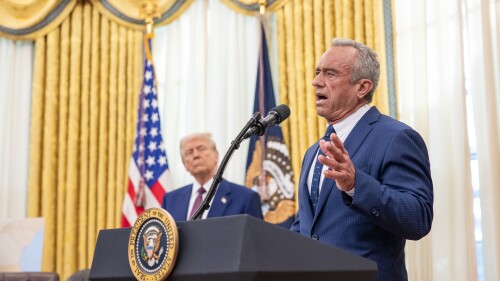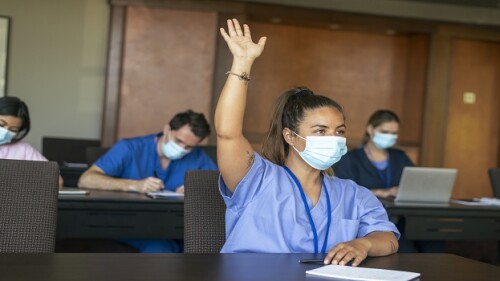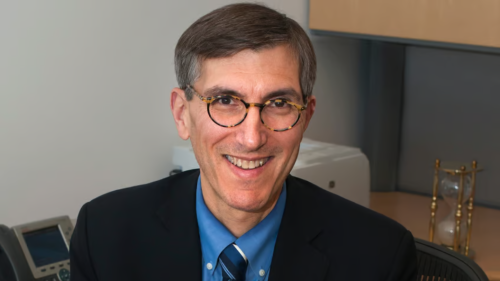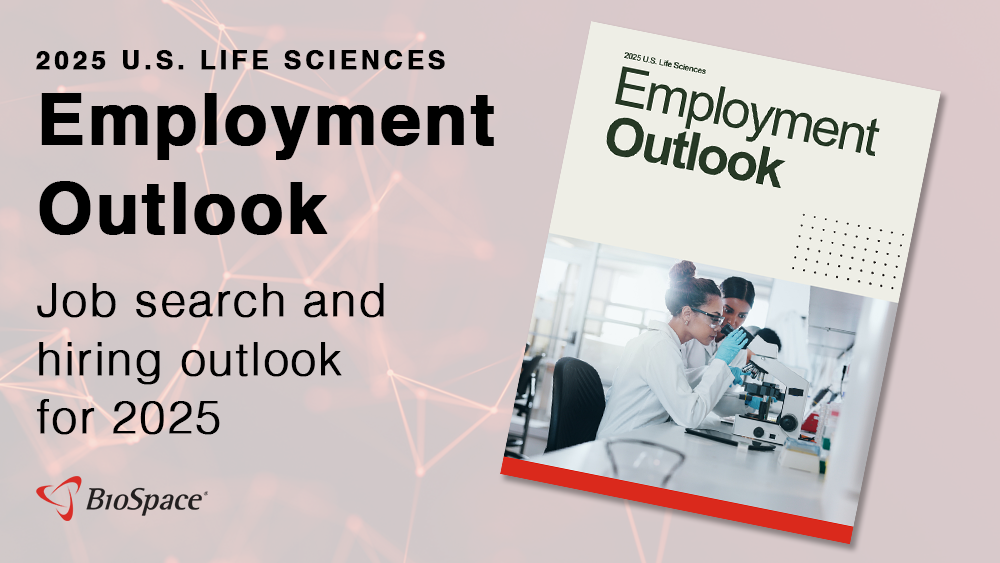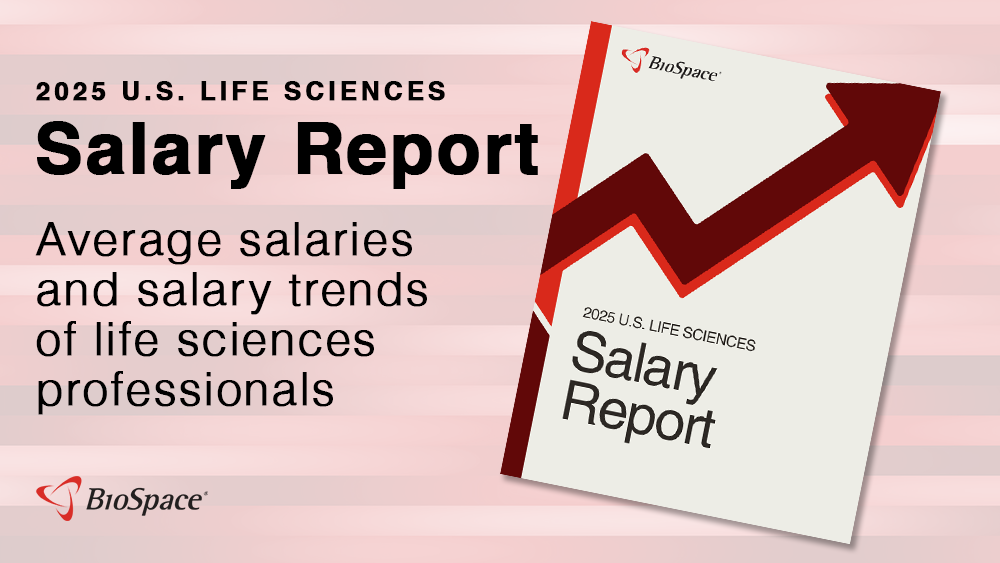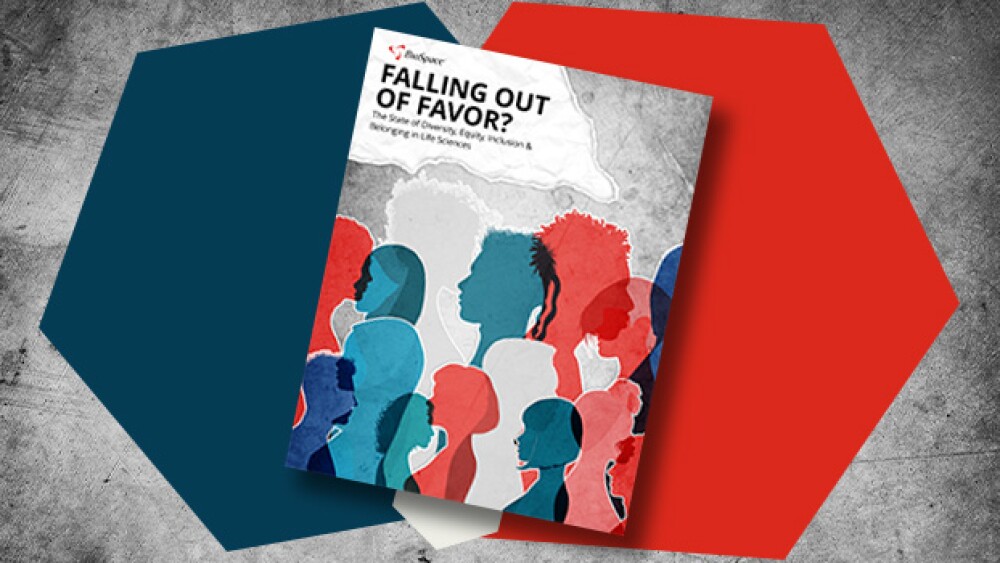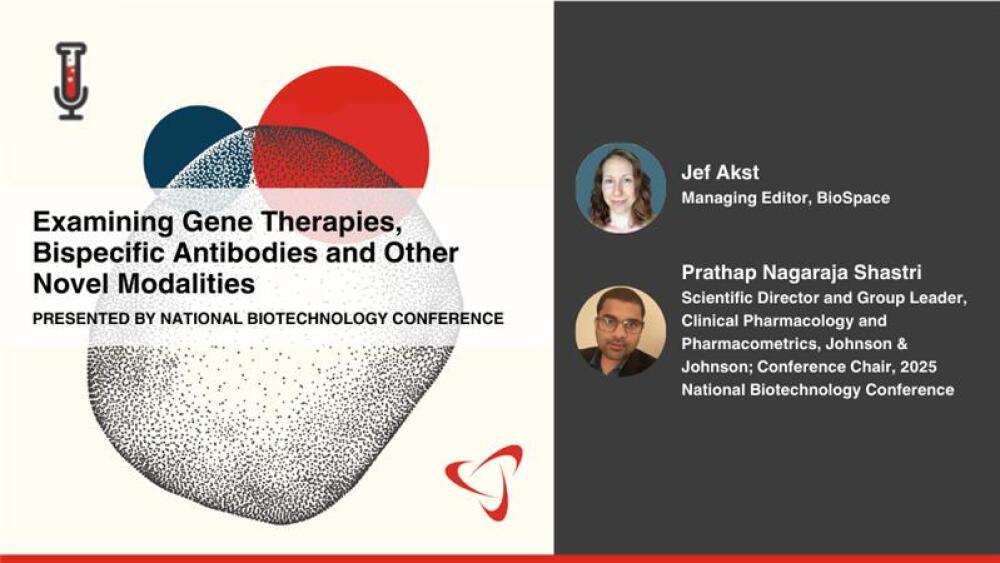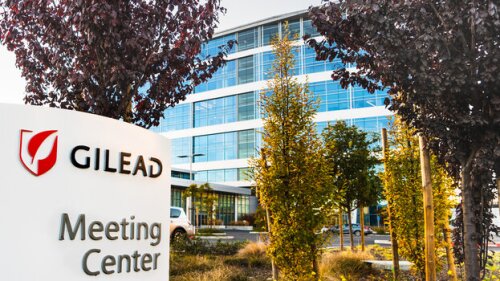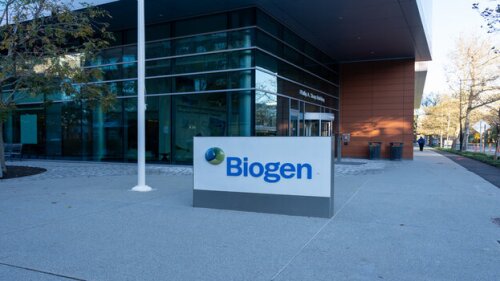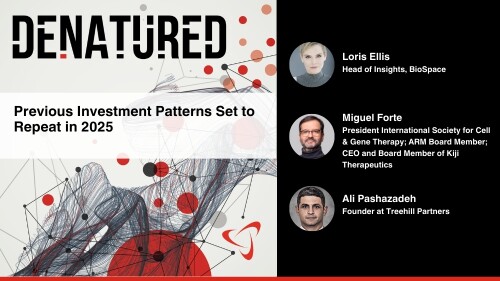Four Los Angeles County life sciences projects are receiving funding to support goals that include adding jobs, creating multitenant facilities for graduation-stage companies, financially supporting emerging businesses and attracting large employers to the area.
In a livestreamed meeting Tuesday afternoon, Health Secretary Robert F. Kennedy Jr. drew a dark portrait of the state of America’s health while addressing the MAHA Commission’s most recent report, which includes plans to research potential links between vaccines and rising rates of chronic disease.
After receiving a complete response letter for its pyruvate dehydrogenase complex deficiency candidate, Saol Therapeutics anticipates it will need “several years” and “significant financial resources” to address the FDA’s concerns.
Truist Securities called pumitamig’s data on Monday “very reassuring,” given the consistency between its performance in Chinese and global patient populations.
Novartis has been investing heavily in its cardiovascular pipeline this year, forging partnerships with Flagship startup ProFound Therapeutics and China’s Argo Biopharmaceutical, among others.
Regeneron’s antibody duos significantly lowered eye itching and redness, as well as pin prick reactivity, in people with cat and birch allergies. Still, BMO Capital Markets expressed uncertainty about the assets’ “commercial potential in a highly generic market.”
FEATURED STORIES
Researchers in pharma and beyond have historically glommed onto a limited number of disease targets, limiting innovation. AI could change that.
While it’s not unusual for certain positions to turn over with a new administration, the number of senior-level FDA staffers who have recently left the agency is unprecedented. The lack of communication, transparency and human decency is as well.
Bo Wang is a renowned AI scientist at the University of Toronto. He’s bringing his open-source culture and computational biology to Xaira Therapeutics in June.
With the recently announced layoffs of 3,500 FDA staffers and exits of branch directors Patrizia Cavazzoni and Peter Marks, there could be a wealth of talent available to biopharma companies. Does this pose an ethical quandary? It depends on who you ask.
While Novartis and Bayer got there first, AstraZeneca, Bristol Myers Squibb and Eli Lilly are all vying to bring their radiopharmaceutical assets to a market projected to be worth over $13 billion by 2033.
Several companies will head to the FDA seeking approval of new Duchenne muscular dystrophy treatments next year but the death of a patient taking Sarepta’s Elevidys raises important safety questions.
LATEST PODCASTS
Last week, the Biden administration revealed the first drug prices negotiated under the Inflation Reduction Act; Lykos, Grail and others make substantial staffing cuts, and Pfizer/BioNTech see mixed results for their COVID/flu vaccine.
Lori and guests address clinical trial design, which if done without careful consideration of the patient population can exclude patients from clinical trials instead of being inclusive.
Lykos Therapeutics will ask the FDA to reconsider its rejection of the company’s MDMA-assisted PTSD therapy, Pfizer scores positive Phase III results for its RSV vaccine, a roundup of Q2 earnings season and more.
Job Trends
Bristol Myers Squibb Receives European Commission Approval for Opdivo ® (nivolumab) in Combination with Cisplatin and Gemcitabine for the First-Line Treatment of Adult Patients with Unresectable or Metastatic Urothelial Carcinoma.
Subscribe to Genepool
Subscribe to BioSpace’s flagship publication including top headlines, special editions and life sciences’ most important breaking news
SPECIAL EDITIONS
In this deep dive, BioSpace investigates China’s rise as a biotech powerhouse.
In this deep dive, BioSpace explores the next big thing in obesity.
BioSpace did a deep dive into biopharma female executives who navigated difficult markets to lead their companies to high-value exits.
DEALS
-
ARCH Venture Partners is the latest venture capital firm to raise a multi-billion-dollar fund. The cash will be used to support new startups working with AI.
-
Novo Nordisk and Eli Lilly are expected to rule the obesity market for a few more years without much challenge. To ensure they stay there as competition enters, the companies are spending billions in licensing and M&A deals.
-
Flagship Pioneering–backed Generate:Biomedicines has signed its second major Big Pharma partnership, bringing in $65 million upfront to use its AI platform to discover novel protein drug candidates.
-
The drop in interest rate is slightly bigger than anticipated and good news for the biotech industry, but little will change in the near term.
-
The sale of Dermavant clears the way for Roivant to focus on autoimmune-focused Immunovant and a slate of upcoming pivotal trials.
WEIGHT LOSS
-
Novo Nordisk executives set a high bar for itself when it projected CagriSema could achieve 25% weight loss. When the GLP-1 combo didn’t hit that mark, investors reeled.
-
Investors appeared disappointed by CagriSema’s Phase III readout, which showed weight loss that fell short of Novo Nordisk’s prior projections for the therapy. Meanwhile, Eli Lilly’s stock rose on the news.
-
After a couple months of uncertainty, the FDA has told compounding pharmacies that they have 60 to 90 days before the agency will enforce rules to stop their production of GLP-1s.
-
In this episode of Denatured, BioSpace’s Head of Insights Lori Ellis, Miguel Forte and Ali Pashazadeh speculate on the impending Trump administration, discuss current challenges faced by CEOs and weigh investment in GLP-1s.
-
According to the World Health Organization, GLP-1 receptor agonists are currently being used in a highly medicalized manner. Healthcare systems need to enact more holistic solutions, focusing on health promotion, disease prevention and policy interventions.
POLICY
-
With President Donald Trump expected to deliver a drug pricing order on Monday that Big Pharma and patient groups alike have railed against, the industry’s tumultuous ride is far from over.
-
Peter Marks, the venerable head of the FDA’s Center for Biologics Evaluation and Research, has been forced out. In this special edition of BioPharm Executive, BioSpace takes a deep dive into the instability of the HHS.
-
Yes, according to leading vaccine physician Paul Offit, who denounced the new placebo-controlled trial requirements for vaccines and sought greater clarity: “I don’t know what they’re talking about.”
-
A new executive order from President Donald Trump aims to cut down the 5-to-10-year timeline to build new facilities while stepping up the rigor of inspections on foreign plants.
-
Twenty attorneys general allege that the recent workforce reduction at the Department of Health and Human Services is unlawful and could have potentially irreversible consequences.
Before searching for a job in the life sciences industry, it is essential to understand the differences between working as a contractor and a full-time employee.
Mentioning these certifications in your resume will set you apart from other candidates, clearing your path to your desired role. Learn here how to add certification to resume.
Applying to your first pharma internship may feel overwhelming, but it doesn’t have to be. Discover how to find, prepare for and be successful in an internship in the pharma industry in our guide.
Learn how to successfully hire interns. Also, find some tips on how to manage and support both in-office and remote interns in our comprehensive guide.
Just because everyone around you seems to be switching to a work-from-home position does not mean it is the right decision for you. It’s important to weigh the options carefully before you decide.
Finding the most cost-effective school for your undergraduate pharmaceutical degree can allow you to start working in the field without incurring astronomical student debt.
HOTBEDS
REPORTS
In this Employment Outlook report, BioSpace explores current workforce sentiment, job activity trends and the prospective job and hiring outlook for 2025, particularly as it compares to the previous year.
BioSpace’s third report on diversity, equity, inclusion and belonging in life sciences examines dramatic shifts in attitude around diversity initiatives.
CANCER
-
At the 2025 National Biotechnology Conference, gene therapies, bispecific antibodies and other novel modalities—relative newcomers to medicine—will be much discussed. In this curtain raiser, BioSpace speaks with conference chair Prathap Nagaraja Shastri of J&J about these highly anticipated topics.
-
The agreement, in which Merck will pay the biotech an undisclosed initial sum to license drugs targeting a solid tumor, could net Epitopea up to $300 million down the line.
-
The news comes on the heels of promising Phase I/Ib data, which point to the potential of casdatifan as a more effective alternative to Merck’s Welireg in renal cell carcinoma.
-
Exelixis’ next-generation tyrosine kinase inhibitor zanzalintinib is being tested for colorectal cancer, renal cell carcinoma and head-and-neck cancer, with several readouts slated for the second half of 2025.
-
Merck’s Keytruda may be the most talked about drug facing loss of exclusivity but it’s far from the only one, as several of the industry’s top-performers are losing key market protections. Some companies are more prepared than others.
NEUROSCIENCE
-
JPM25 is in full swing as several pharma powerhouses—including Merck, Lilly and Amgen—detail their strategies for growth in the coming year.
-
The FDA accepted Biogen and Eisai’s BLA for a subcutaneous administration of the anti-amyloid antibody Monday as the partners await the regulator’s decision on a new intravenous regimen following an underwhelming launch riddled with coverage and accessibility barriers.
-
Biogen’s proposed acquisition comes after two difficult years of regulatory and clinical challenges, during which shares of Sage Therapeutics have fallen by more than 90%.
-
Among Intra-Cellular’s neuropsychiatric assets is Caplyta, a pill approved for schizophrenia and bipolar depression and proposed for major depressive disorder.
-
Emraclidine was the centerpiece of AbbVie’s $8.7 billion acquisition of Cerevel in December 2023 but failed two mid-stage trials. Tavapadon, meanwhile, has been a more rewarding asset for the pharma, clearing three Phase III Parkinson’s studies in 2024.
CELL AND GENE THERAPY
-
Anito-cel has shown no signs of delayed neurotoxicity at around 9 months of follow-up, hinting at a safety profile that could set it apart from J&J and Legend’s Carvykti.
-
Vertex unveiled long-term durability data for Casgevy, while Beam presented Phase I/II findings for its investigational base editor BEAM-101, building up to a BLA by late 2026.
-
Not developing potency assays and gaining knowledge about MOAs early in the drug development process not only can break ATMP success but can cause costs and delays that lead to company closures.
-
The payment scheme will tie gene therapy payments to improvements in health outcomes—and could potentially boost the uptake of these sickle cell disease treatments.
-
In this episode of Denatured, BioSpace’s Head of Insights Lori Ellis, Miguel Forte and Ali Pashazadeh discuss how a slow and steady pace is a continuation of the pattern we have seen throughout the last three years.



